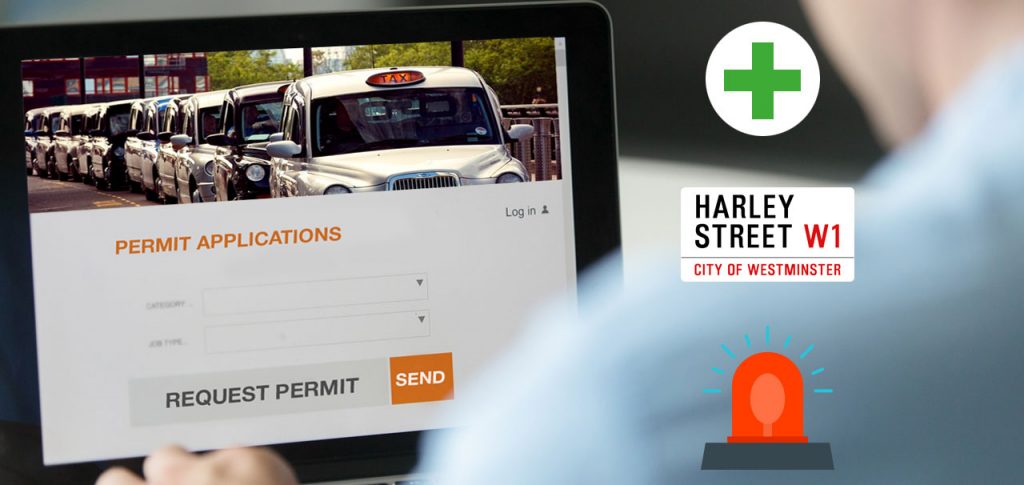
2020 has been an unprecedented year of change and as we slowly creep towards some form of normality major parking organisations have been reviewing their operations to ensure readiness in what is likely to be a turbulent time ahead.
Use of rigid and legacy technology has forced many parking organisations to change as the shift in demand for flexible and touch-free services cannot be easily delivered by their incumbent in-house or legacy vendor supplied systems. In more extreme cases, parking organisations have simply suspended services altogether with a view to restart once normality is restored. The conclusion here is that the pandemic has caused a major shift change which parking organisations need to embrace and adapt to.
Parking Permit Portals, along with the administration and processes that go along with it, are a perfect example of a typical parking use case that needs to change in a post-COVID world and here’s why:
- Application processes are likely to become more complex and changeable. Aspects will include the need to support document uploads along with a richer variety of permit types available for users to apply for. Solutions need to be flexible with different criteria for different permit types to determine if an applicant is eligible or not. Furthermore different payment methods and controls should be available for individual permit types with the ability for Administrators to change things on the fly. A good example here is provisioning a new permit type for key workers to seamlessly come in and out of a facility whereby Administrators want to obtain evidence of key worker status prior to issuance.
- Procedures around permit issuance will need to be more real-time, informative and paperless. Physical permits are still relatively common and in some cases, such as paper permits, require enforcement officers to manually check. Proximity permits (NFC/RFID/Beacons) are becoming more widespread however like their paper permit counterpart need to be physically exchanged prior to use and furthermore require infrastructure installation and maintenance. Digital permits may be combined with a physical permit to enable aspects of real-time use (prior to physical permit receipt) however the trend moving forward will be the removal of paper permits and the necessity to keep users fully informed in real-time of their application process and issued permits at every stage, including but not limited to initial service registration to notification reminders when issued permits are due to expire.
- Administrative processes will need to become more intelligent and automated. Parking permit application reviews can be a time consuming and costly exercise, particularly on facilities with a large amount of permits and ones that use fixed date periods. As larger varieties of permit types become available, the criteria of evaluating different types of application requests can also become more complex and time consuming hence systems will need to be able to support features such as configurable score based eligibility criteria and the flexibility to define and change approval methods for different permit types. A good example here is auto-approving any daily permit to a maximum of 200 for any specific day but multi-location annual staff permits would require first level approval from nominated line managers prior to an Administrator processing the request. Advanced criteria such as shift patterns, time and distance to work, public transport options etc. should be easily obtained and intelligently/automatically reviewed without putting additional workload on Administrators. Flexible criteria setting and additional field capture per permit type will also need to be available.
- Parking permit owners will need to have more control and agility around use. Whether it is a change of vehicle, change of parking facility or temporary suspension of permit, systems need to fully support self-service use and reduce work required by Administrators to manually process requests.
- Different vendor systems will need to talk to each other more. This is particularly important to ensure a simple user experience and policy enforcement. Simple user experience is paramount for applicants and aspects around single sign-on and/or federated logins should be implemented if parking permit applications are part of a bigger ecosystem (as is the case for many local authorities, universities and hospitals). Manual kiosk and/or legacy “white list” based systems, that typically come bundled with some enforcement solutions, have their place but will increasingly not be fit for purpose and vendors will need to provide open interfaces to let other systems integrate to allow processes to flow through seamlessly in real-time. Amongst others, integration could include vehicle details (including emission data), enforcement systems (Fixed/Mobile ANPR, Handheld), HR systems (Payroll), central databases (Blue Badge) and/or authentication systems (for single sign-on requirements). Integration methods should follow best practice standards with vendor specific proprietary interfaces phased out.
At Mobile Worker Plus we have a market leading Permit Portals and Permit Administration product, giving our customers a world-class digital permit solution that puts the emphasis on owners taking more responsibility on their applications and issued permits whilst leaving Administrators to efficiently control the process and resources that go with it. Whether it is a deployment for staff, taxi, blue badge, visitor and/or residential parking permits, our product can be configured to meet your requirements in a simple and fully compliant way. Our customers also benefit from an evolving roadmap and low cost of ownership as we host our solution on ISO 27001 compliant cloud infrastructure.
Please contact us to discuss your requirements and we look forward to supporting your business in this rapidly changing world.
